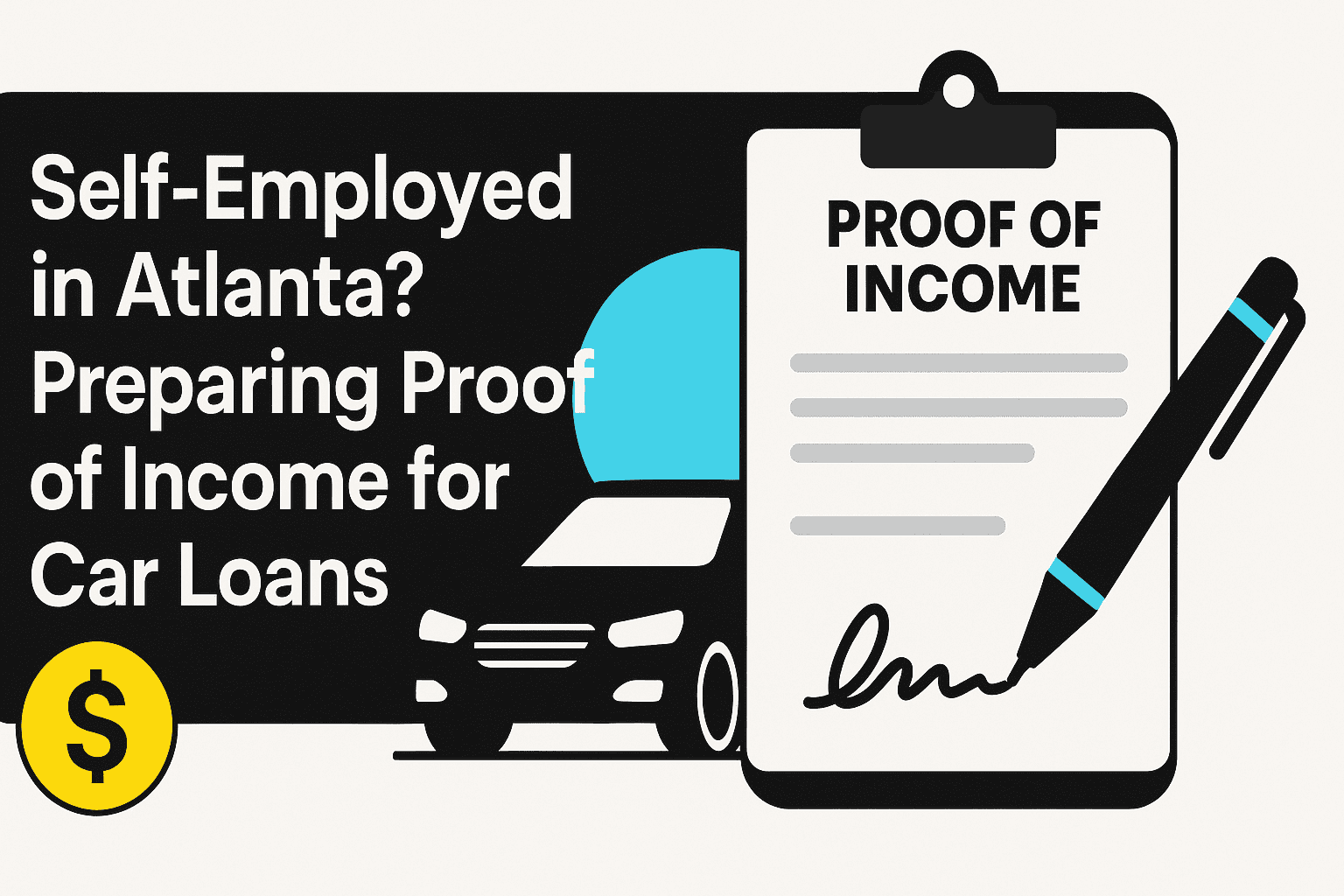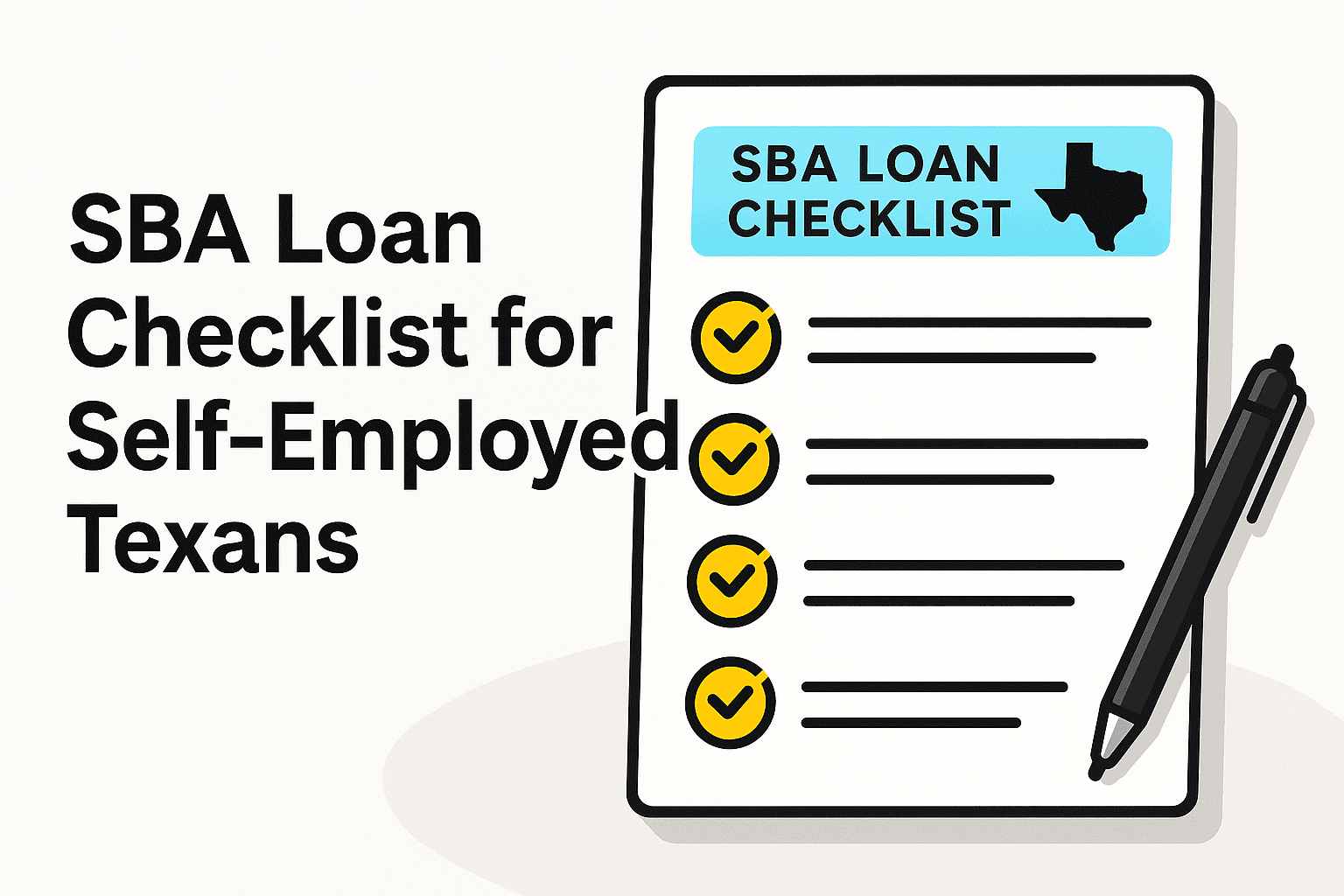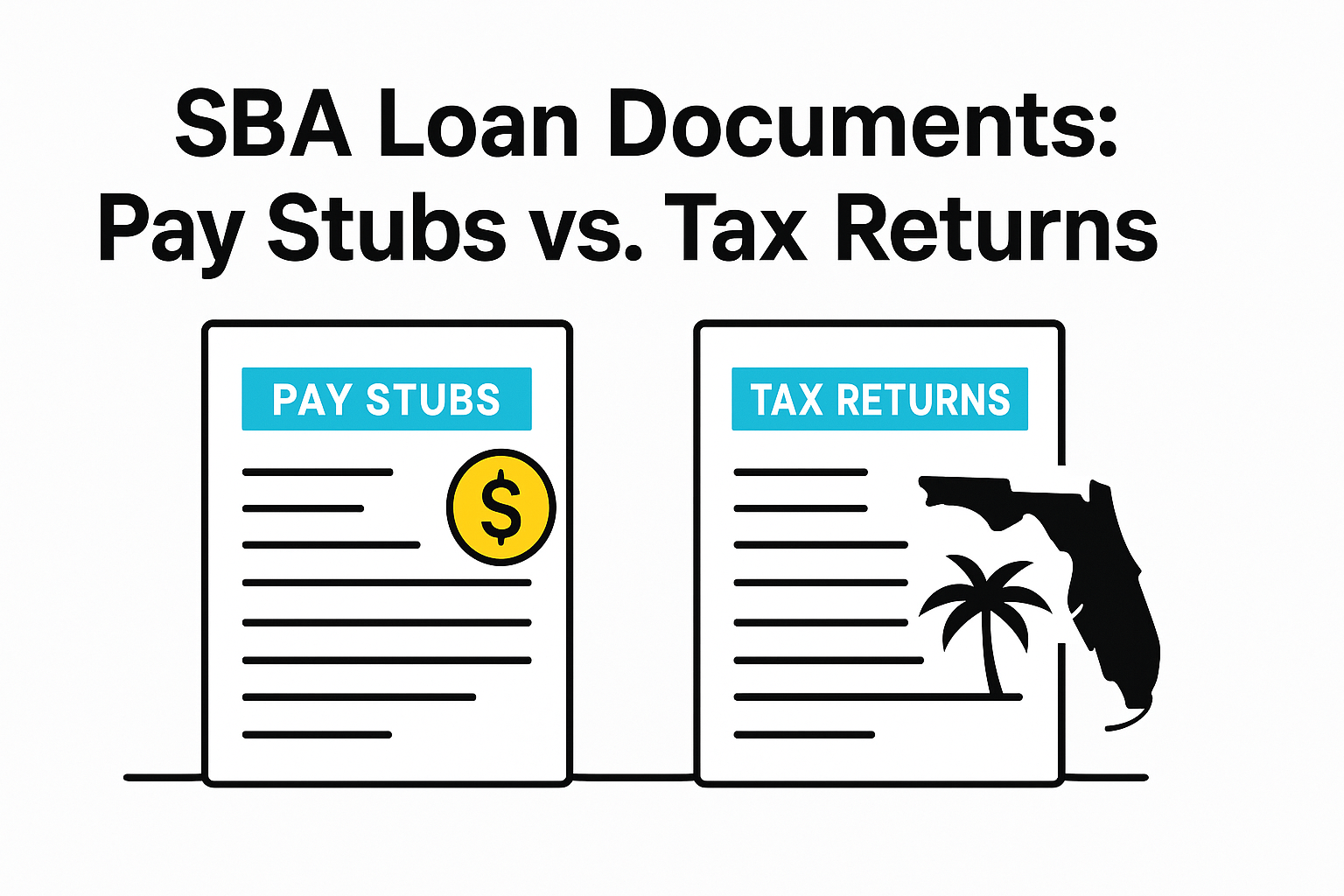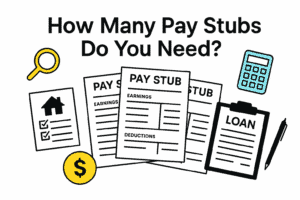Last updated: September 2025
Small‑business owners and freelancers across Texas power one of the nation’s most resilient economies. Yet when it comes to SBA loans, the process can feel unclear—especially if you don’t have employer‑issued W‑2s. Instead, you must present a coherent package built from invoices, bank statements, tax returns and a clear profit‑and‑loss picture. Our goal is to help you organise those materials into a compliant, lender‑friendly set of self‑employed SBA loan documents without changing any underlying facts. :contentReference[oaicite:0]{index=0}
FinancialDocsProvider.com specialises in formatting, reconciling and presenting your existing records—never fabricating numbers, always prioritising clarity. This guide explains the legal basics, permitted and prohibited edits, practical use cases and a Texas‑oriented checklist. It is general information, not legal advice; always follow your lender’s directions and applicable laws.
Related Entities & Terms
Below is a glossary of agencies, forms and terms that appear throughout this guide. Understanding these will make the rest of the content easier to follow:
- Forms: W‑2 (US wage statement); 1099‑NEC/1099‑K (independent contractor income); T4 & T4A slips (Canadian employment income); Notice of Assessment (NOA); SA302 tax calculation & Tax Year Overview (UK).
- Statements: pay stubs/payslips, bank statements, profit‑and‑loss (P&L) statements, invoice logs, cash‑flow summaries.
- Regulators & agencies: Consumer Financial Protection Bureau (CFPB), Federal Trade Commission (FTC), Internal Revenue Service (IRS) in the US; Financial Conduct Authority (FCA) & HM Revenue and Customs (HMRC) in the UK; Financial Consumer Agency of Canada (FCAC) & Canada Revenue Agency (CRA) in Canada.
- Programs: Small Business Administration (SBA) loans, microloans, 7(a) loans, 504 loans.
- Other terms: debt‑to‑income ratio (DTI), annual percentage rate (APR), cash basis accounting, anti‑money‑laundering (AML) rules, Know Your Customer (KYC).
What are the legal basics of SBA loan documentation?
Authentic, well‑organised records are the foundation of a successful SBA file. Lenders and government programs rely on your documents to confirm eligibility, evaluate repayment capacity and assess how funds will be used. You may improve formatting for readability, but you must never change the facts those documents contain.
The SBA works through approved lenders. Those lenders set document lists based on your business model, ownership and loan purpose. In practice, they verify identity, business existence and income patterns by cross‑checking your tax filings, bank statements and P&L. They also look for consistency across dates, names and account numbers.
Across the US, UK and Canada, authenticity is non‑negotiable. Governments expect you to keep reliable records and provide them on request. US self‑employed filers should retain records long enough to substantiate income and deductions for tax purposes. UK sole traders and partners must keep Self Assessment records. In Canada, many applicants print a CRA Proof of Income Statement from the My Account portal and use it to support loan applications.
Bottom line: careful formatting is lawful; falsifying data is not. If you discover an error, correct it with the issuing institution and submit the updated official document alongside the original.

Which edits are allowed when preparing SBA loan documents?
Lenders care about accuracy, legibility and traceability—not aesthetics. You may reformat files to help reviewers work faster, provided you do not change any amounts, dates, account numbers or counterparties. Thoughtful presentation reduces back‑and‑forth questions and keeps your application moving.
Permissible edits include:
- Redaction for privacy – Mask sensitive data such as full Social Security or SIN numbers, complete account numbers and home addresses. Leave names, last four digits and transaction dates visible so underwriters can tie deposits to invoices.
- Improving legibility – Fix skewed scans, straighten pages, rotate sideways PDFs, adjust brightness and contrast, and remove duplicated blank sheets. Clean, readable copies prevent misinterpretation.
- Merging and organising files – Combine multi‑month statements, invoices and letters into a single PDF. Add page numbers or bookmarks and standardise date formats. Use clear file names like
2025‑01_bank‑statement_business.pdf. - Adding navigation aids – Create a cover page, a short table of contents and section dividers. Non‑destructive callouts can highlight key deposits as long as the underlying numbers remain untouched.
- OCR and conversions – Apply optical character recognition so text is searchable. Convert CSV or HTML statements to PDF for consistency across the packet.
Examples: Redact a bank statement by covering the middle digits of the account number, not the account holder’s name. Rotate a sideways tax notice to portrait orientation. Insert bookmarks for each month so an underwriter can jump to “March 2025” in one click.
Do: preserve every page, show dates and leave visible links between documents. Don’t: type over numbers, move transaction dates or paste logos from another bank. When a line item is illegible, request a cleaner copy from the issuer instead of guessing.
What document edits are illegal and considered fraud?
Editing crosses into fraud the moment it misrepresents facts. Altering amounts, dates, payees, account numbers or client names is unlawful. Regulators and lenders deploy checks that detect manipulation, so even “small” changes can trigger denials and further investigation.
Unlawful actions include:
- Changing pay amounts or hours worked – Inflating gross pay, hourly rates or contract totals misstates your earnings and deceives the lender.
- Back‑dating or post‑dating documents – Shifting invoice or deposit dates to create a false pattern of stability.
- Inventing clients or employers – Adding fictitious counterparties, logos, signatures or addresses to bank statements or pay stubs.
- Editing tax documents – Modifying W‑2s, 1099s, SA302s, NOAs or Proof of Income Statements is prohibited and may constitute tax fraud.
- Removing watermarks or security features – Erasing micro‑print, QR codes or digital stamps used to verify authenticity.
- Inserting or deleting transactions – Adding fake deposits, removing overdraft fees or “cleaning up” negative balances.
- Manipulating digital metadata – Changing PDF metadata or object layers to conceal editing activity.
How lenders spot tampering: mismatched fonts or kerning; page totals that no longer reconcile; checksum or hash differences from originals; bank‑issued security features that don’t scan correctly; dates that conflict across documents. If you’re unsure whether an edit is acceptable, assume it is not and ask your lender first.
Compliance Snapshot: Allowed vs. Illegal Edits
Allowed: masking account numbers, straightening scans, merging files, standardising dates and adding bookmarks. Illegal: changing amounts or dates, creating transactions, editing tax forms, adding logos or deleting bank‑issued watermarks. Stay on the safe side—format for clarity but never alter facts.
When do you need professional document formatting?
Some applicants can assemble their own packet with ease. If your income is stable and your documents are consistent, a simple binder may suffice. Professional help becomes valuable when records are numerous, inconsistent or time‑sensitive—and when you want to minimise lender questions.
Here are common scenarios where expert support is helpful:
Self‑employed Texans applying for SBA loans
Most SBA lenders request a business plan, two years of business and personal tax returns, year‑to‑date financials and recent bank statements. Sole proprietors supplement with invoices and 1099s. The lender checks whether names, dates and amounts align across each file and whether income is reasonable for your industry.
Mini‑scenario (Houston food truck): A 7(a) loan applicant compiles two years of Schedule C returns, a current P&L, six months of bank statements and invoices for catering events. We reconcile deposits to invoices, annotate seasonal dips and package both cleaned copies and originals. The bank spends less time chasing missing pages and more time underwriting.
Mini‑scenario (Austin consultant): A marketing consultant receives mixed 1099‑NEC and 1099‑K income. We group invoices by client, build a receivables log and tie large deposits to corresponding payouts. A one‑page cover note explains quarter‑end prepayments that temporarily spike revenue.
Mini‑scenario (San Antonio e‑commerce seller): A seller with platform disbursements uploads CSV reports and monthly statements. We convert the CSVs to PDF, reconcile gross sales to net payouts and highlight returns and platform fees, so the underwriter sees dependable net income.
Renters and auto‑loan applicants
Understanding other lending contexts can sharpen your SBA approach. Landlords often ask for recent pay stubs (if any), bank statements and prior‑year returns. Auto lenders may require 6–12 months of statements, tax returns with Schedule C or SA302s and a current P&L. The principles are the same: present authentic, legible records and pre‑empt questions with brief explanations.
Tip: If account activity mixes personal and business spending, label business deposits and expenses. Consider adding a simple legend at the front of your packet so a reviewer can decode your highlights quickly.
Other situations
Professional formatting can also help with grants, visas or disaster assistance. Visa applications may require bank statements covering a specific window and a bank letter. Disaster programs may ask for proof of economic injury in addition to income documentation. In each case, keep originals and an indexed, clearly labelled PDF for submission.
Whatever the context, the theme is constant: authenticity and clarity. Ask requestors exactly what they need and consult qualified professionals if you’re unsure.
For deeper dives, see our guides on self‑employed car loans and using bank statements as proof of income. Both include mini‑scenarios, checklists and ways to keep self‑employed SBA loan documents consistent.
How does FinancialDocsProvider.com work?
We streamline documentation while guarding compliance. We organise and reconcile your existing records; we never create numbers or identities. Here’s our process for self‑employed SBA applicants:
- Intake and document collection – Complete a brief questionnaire so we understand the context (SBA loan, rental, visa, etc.). Upload copies of official documents—bank statements, invoices, tax forms and accountant letters. We do not ask for online‑banking credentials.
- Reconciliation and cross‑checking – We map deposits to invoices or 1099s and flag discrepancies. Where helpful, we add a simple table with document date, deposit date and amount to show how funds flow.
- Formatting and redaction – We merge files chronologically, add bookmarks and page numbers and redact sensitive data while leaving essential identifiers visible.
- Explanation note – If income is seasonal or project‑based, we draft a short cover note referencing supporting documents. The note clarifies context without altering any figures.
- Delivery – We provide a clean, indexed packet plus originals via secure portal. You receive a tailored checklist so you know exactly what to submit to your lender.
Security & confidentiality: Data stays confidential within your engagement. We store only what we need to deliver your packet, and we’ll provide originals alongside formatted copies so you can submit either version if your lender requests.
Boundaries: We do not fabricate pay stubs, modify tax forms, create transactions or add logos. If a document is missing, we’ll guide you to request it from the issuing institution rather than attempting to “recreate” it.
To learn more about our approach, see our proof of income editing and bank statement formatting services and visit our about page.
What’s on the SBA compliance checklist?
A tidy, complete packet helps your lender move quickly. Use this checklist to gather and organise self‑employed SBA loan documents. Tailor as needed to match the exact list your lender provides.
- Identify the correct period – Gather two years of personal and business tax returns (including Schedule C, T4, NOA or SA302 as applicable) and six months of bank statements for both business and personal accounts.
- Prepare a current P&L statement – Summarise year‑to‑date revenue and expenses, and reconcile totals to bank deposits. Add short footnotes for any seasonal swings.
- Collect invoices and contracts – Match each deposit to an invoice, contract or payout report. Label the statement page where each deposit appears.
- Include a business plan – Outline objectives, market, operating model, current challenges and how loan funds will be used. Keep projections realistic and supported by your historical data.
- Verify personal and business details – Confirm names, addresses, business names, partial account numbers and statement dates are consistent across all documents.
- Redact sensitive information – Mask full SSN/SIN and full account numbers, leaving last four digits visible for continuity.
- Check completeness – Include all pages, even ones marked “intentionally left blank.” Maintain bank‑issued page numbering and keep appendices intact.
- Ensure recency – Replace outdated statements with PDFs dated within 60 days of submission unless your lender requires a specific window.
- Explain anomalies – Write a brief note for large cash deposits, inter‑account transfers or overdrafts. Provide receipts or a client explanation where possible.
- Keep originals – Retain original, unedited documents and any bank letters. Lenders may ask to see both versions.
- Add supporting credentials – Keep a copy of your government‑issued ID, EIN/Tax ID letter, business licence and insurance certificate, if applicable.
- Document collateral – For secured loans, prepare appraisals or ownership proofs for equipment, vehicles or real estate.
- Organise digital files – Use consistent file names with YYYY‑MM dates, and include a simple table of contents at the front of your PDF packet.
Start with this list, then confirm exact requirements with your lender. When in doubt, include the document and provide a one‑line explanation that points to the supporting page.
What red flags and mistakes should you avoid?
Preventable errors slow reviews and can derail approvals. Catch these issues before you submit. Most problems are solvable with a short note or a corrected document from the issuer.
- Inconsistent deposit patterns – Large month‑to‑month swings without explanation invite questions. Provide a brief note on seasonality or project timing.
- Missing pages or broken pagination – Statements often show “Page X of Y.” Submit complete sets and keep page numbers in sequence.
- Unexplained large cash deposits – Cash without invoices can trigger AML reviews. Include receipts or client letters when legitimate.
- Generic payroll descriptors – “ACH CREDIT” without a payer name is ambiguous. Ask the payer to include their name in future, and annotate which invoice the deposit matches.
- Over‑editing – Excessive redaction or decorative edits look suspicious. Keep privacy edits minimal and factual.
- Mixing personal and business accounts – If you use one account for both, label business activity clearly. Consider opening a dedicated business account going forward.
- Name or address mismatches – If names differ across documents (e.g., LLC vs. trade name), include a brief explanation and any DBA paperwork.
- Totals that do not reconcile – If P&L totals don’t match statement deposits, add reconciliation notes or correct transcription errors.
- Out‑of‑date documents – Stale statements slow reviews. Replace PDFs older than the window your lender specified.
- Illegible scans – Crooked, dark or low‑resolution pages cause confusion. Rescan or request clean copies from the issuer.
Treat these as a pre‑flight checklist. Fixing them before submission signals professionalism and respect for the process.
Where can I find official resources and further reading?
Use authoritative sources to stay current on requirements and timelines. The links below provide the most reliable starting points. Supplement them with your lender’s specific instructions.
- U.S. SBA loan programs – Describes SBA loan types, eligibility criteria and lender matching.
- IRS recordkeeping guidance – Explains the burden of proof and how long self‑employed individuals must keep documents.
- HMRC record‑keeping rules – Outlines the records self‑employed UK residents must maintain.
- CRA proof of income statement – Describes how to obtain a Proof of Income Statement for loans and benefits.
- Internal guides: our posts on self‑employed renters’ proof of income, self‑employed car loans and bank statements as proof of income offer detailed scenarios, editing guidance and compliance tips.
- Want to understand our services? Learn more about our proof of income editing and bank statement formatting offerings, review our pricing, or contact our team to discuss your needs.
Bookmark these pages and check back before you submit. Lenders may update checklists, and program details can change during disaster declarations or policy refreshes.
Frequently Asked Questions
What documents do self‑employed applicants need for an SBA loan?
Most lenders ask for a business plan, two years of business and personal tax returns, a current P&L statement, six months of bank statements and proof of income such as invoices or 1099s. Exact requirements vary by lender and loan type.
How many years of tax returns are typically required?
Two years is the common minimum. Some lenders request three to evaluate stability and compare earnings across documents. Always include all schedules (for example, Schedule C, SA302 or NOA) and attach any Notices of Assessment.
Do I need both business and personal bank statements?
Yes. Self‑employed borrowers often commingle funds, so lenders request both to verify income and expenses. If your accounts are separate, provide statements for each; if not, clearly label business transactions in your personal account.
Can I edit my documents to hide sensitive information?
Yes—within limits. You may redact personal identifiers and improve legibility by fixing scans, rotating pages or adding bookmarks. You may not change amounts, dates, payees, account numbers or counterparties.
What happens if I submit falsified documents?
Submitting altered documents is fraud. Lenders can and do detect tampering. Beyond a denial, you may face civil liability or criminal penalties. Always provide genuine records and add context with an explanatory note when needed.
Need accurate, reliable financial documents fast? Contact FinancialDocsProvider.com now.






Add comment